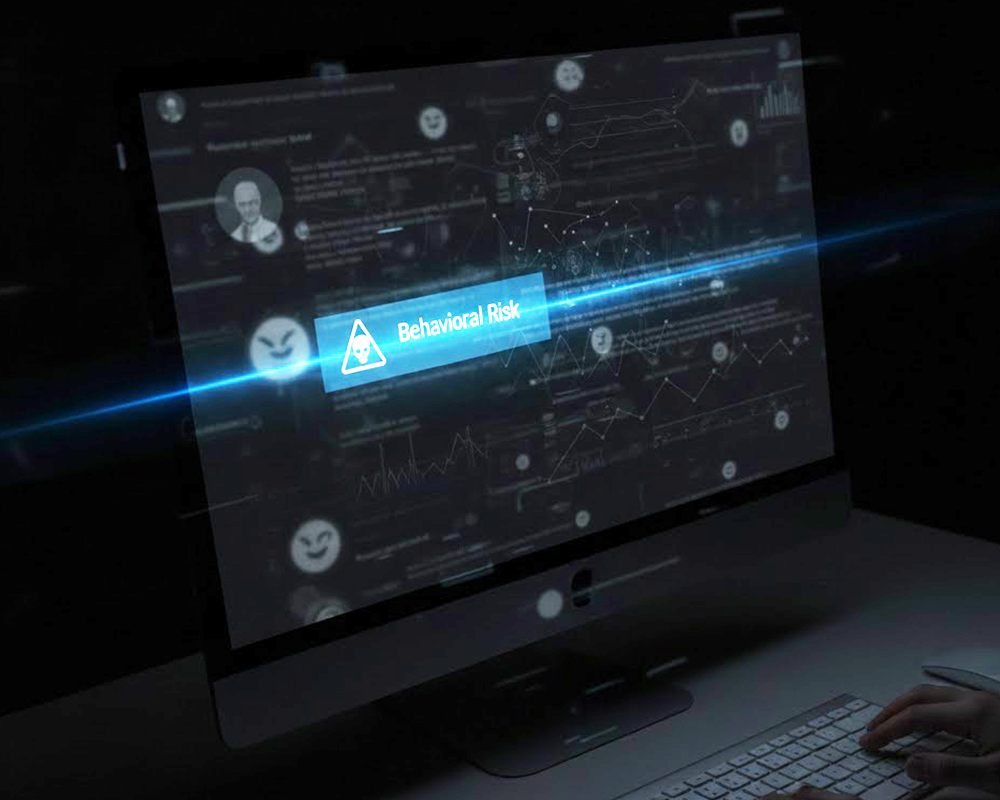If your drug testing policy still assumes your employees work in cubicles, report to the same location daily, and live in states where marijuana is illegal, we've got some unsettling news for you. You're essentially running workplace security on Windows 95 – it might technically still function, but it's full of dangerous vulnerabilities and isn't compatible with today's reality.
The workplace landscape of 2025 bears little resemblance to the pre-pandemic world. Remote work has scattered your employees across multiple states (with their patchwork of conflicting cannabis laws). Your temporary workforce might represent 30% of your headcount on any given day. With 39 states now having legalized some form of marijuana (May 2025), and federal law remaining stubbornly unchanged, the compliance minefield has never been more treacherous, and the stakes couldn’t be higher.
Companies with outdated policies aren't just risking failed drug tests – they're risking expensive litigation, regulatory penalties, and watching top talent walk out the door to competitors with more modern approaches.
But here's the truth: maintaining a drug-free workplace isn't impossible in 2025 – it just requires a more sophisticated, nuanced approach than the one-size-fits-all policies of yesteryear. Forward-thinking companies are completely reimagining their strategies to balance workplace safety, regulatory compliance, and the realities of today's labor market.
The days of simple drug testing may be over, but with the right approach, your drug-free workplace can be more effective – and more defensible – than ever before.
Foundations of an Effective Drug-Free Work Environment
Drug-free workplace policies aren't just legal checkbox exercises – they're critical business tools that directly impact your bottom line. The National Safety Council reports that employees with substance use disorders miss nearly 50% more work days than their peers, and companies that implement comprehensive drug-free workplace programs can identify these issues before they affect productivity and safety.
But there's another financial reality at play. Drug testing isn't just about preventing problems. It's about avoiding legal complications in an increasingly complex regulatory environment. With marijuana laws varying dramatically across states and new court rulings emerging monthly, outdated policies create significant liability exposure.
In today's ultra-competitive talent market, your drug policy isn't just a safety measure – it's part of your employer brand. The most successful organizations have moved beyond the "gotcha" approach to testing and toward policies that balance safety requirements with the reality that qualified candidates have more options than ever before.
Core Components of a Robust Policy
A bulletproof drug-free workplace policy in 2025 looks dramatically different from its 2015 counterpart. While the fundamentals remain, the nuances have evolved considerably:
Clear Scope and Purpose Statement: Modern policies explicitly tie testing requirements to workplace safety, productivity, and legal obligations, not moral judgments. This isn't just semantics; courts increasingly scrutinize whether policies serve legitimate business purposes.
Role-Based Testing Frameworks: Effective policies implement tiered testing approaches based on job responsibilities. For instance, safety-sensitive positions like forklift operators or healthcare workers may face stricter standards than administrative staff with no safety impact. These distinctions must be clearly documented in job descriptions and consistently applied.
Testing Methodology and Timing: Specify which testing methods you'll use (urine, hair, saliva), their detection windows, and when testing occurs (pre-employment, random, post-accident, reasonable suspicion). Each method has different implications for detecting current impairment versus historical use, a distinction increasingly important for marijuana.
State-Specific Addenda: If you operate across multiple states, blanket policies no longer cut it. Your master policy must address federal requirements, while state-specific supplements address local laws, particularly around marijuana accommodation and testing restrictions.
The organizations seeing the most success have replaced rigid zero-tolerance approaches with nuanced frameworks that acknowledge the complexity of today's substance landscape while still maintaining necessary safety standards.
Your drug policy isn't just about catching drug users – it's about creating a safer, more productive workplace while navigating an increasingly complex legal landscape. The next sections will build on these foundations to address specific modern workplace challenges.
Remote Work: Testing When Nobody's in the Office
Remember when drug testing meant directing employees to the lab down the street? Those days are long gone for companies with remote teams spread across multiple states or even countries. The logistical challenges of maintaining testing standards for distributed workforces have forced a complete rethinking of traditional approaches.
The first challenge is purely practical: how do you test someone who lives 2,000 miles from your nearest facility? Innovative companies are solving this through several approaches:
Mobile Collection Networks: Nationwide providers now offer mobile collection services that can meet employees virtually anywhere. These services maintain proper chain-of-custody protocols while eliminating geographic barriers. The employee simply schedules an appointment, and a qualified collector comes to an agreed location near their remote workspace.
Virtual Observed Collections: For companies needing observed collections (particularly for DOT-regulated positions), technology now enables remote observation via secure video platforms. The employee receives a testing kit, and a qualified observer monitors the collection process via video, maintaining compliance with observation requirements while eliminating travel.
Local Lab Partnerships: Some organizations have established relationships with collection facilities across multiple jurisdictions, creating a network that employees can access regardless of location. These partnerships often include standardized protocols to ensure consistent application of testing procedures.
The key takeaway? Geographic distance is no longer a valid excuse for inconsistent testing. With the right partners and processes, remote employees can be held to the same standards as on-site staff.
Work Hours vs. Personal Time
Perhaps the most challenging aspect of remote work drug policies is the blurred line between work hours and personal time. When an employee's home is also their office, traditional concepts of "on the clock" become murky at best.
This creates several policy questions that require clear answers:
Defining "Work Hours": Remote policies must explicitly define what constitutes work time. Is it strictly scheduled hours? Any time logged into company systems? Without this clarity, reasonable suspicion testing becomes nearly impossible to implement fairly.
Impairment vs. Use: Remote work policies are increasingly shifting focus from detecting substance use to addressing actual work impairment. This subtle but crucial distinction recognizes that off-hours substance use (particularly of legal substances like alcohol or state-legal marijuana) may not impact performance when the employee isn't actively working.
Privacy Boundaries: Remote employees have reasonable expectations of privacy in their homes that don't exist in traditional workplaces. Effective policies acknowledge these boundaries while maintaining necessary safety standards.
Forward-thinking companies are addressing these complexities through clearly defined virtual workplace rules. One effective approach is establishing "virtual reporting for duty" standards – specific times when employees must be fully capable of performing all job functions, just as they would be in a physical workplace.
Technology Solutions
Technology is quickly evolving to address the unique challenges of remote workforce drug testing, with several innovative approaches gaining traction:
Oral Fluid Testing: Saliva-based testing has emerged as a preferred method for remote workers. It offers a shorter detection window than urine testing (generally catching use within the past 24-48 hours rather than weeks), making it more focused on recent use that might affect current performance. Employees can perform the collection via video observation, maintaining chain of custody while eliminating travel requirements.
Virtual Impairment Detection: Some companies are piloting cognitive impairment detection technologies that measure reaction time, coordination, and decision-making against established baselines. These approaches focus on fitness for duty rather than substance presence and can be administered remotely.
Video Observation Platforms: Purpose-built platforms for observed collections maintain proper protocols while accommodating remote workers. These systems include features like identity verification, tamper-evident indicators, and secure data transmission.
While these technological solutions solve many logistical challenges, they must be implemented with careful attention to privacy concerns and state-specific restrictions. California, New York, and Illinois, for example, have particularly stringent requirements around video monitoring and biometric data collection that may impact certain technology-based approaches.
The most successful remote work drug testing programs combine these technological tools with clear policies and robust communication. Remote employees should understand exactly what's expected of them, how testing will be conducted, and how the company distinguishes between work impairment and lawful off-duty conduct.
Remember, the goal isn't to monitor remote employees' every moment – it's to ensure they're capable of performing their duties safely and effectively, just as you would in a traditional workplace. With thoughtful policies and appropriate technology, remote work doesn't have to mean compromised safety standards.
Navigating the Green Wave Without Getting Burned
If you've been hoping marijuana legalization was just a passing trend that would eventually resolve itself, I've got bad news for you. The legal cannabis landscape has only grown more complex – and more challenging for employers trying to maintain consistent drug policies.
As of early 2025, 39 states plus Washington D.C. have legalized medical marijuana, while 24 states have approved recreational adult use. Meanwhile, federal law stubbornly maintains marijuana's Schedule I classification (though reduced from Schedule I to Schedule III for medical research), creating a legal contradiction that leaves employers caught in the middle.
What's particularly troublesome for multi-state employers is the wild inconsistency in employment protections across states:
Zero Protection States: Some states like Texas and Indiana offer no employment protections for cannabis users, allowing employers to maintain zero-tolerance policies.
Medical-Only Protections: States like Arizona and Delaware prohibit adverse employment actions based solely on positive marijuana tests for registered medical users (with exceptions for safety-sensitive positions).
Comprehensive Protection States: New York, New Jersey, and California have enacted broad protections, prohibiting employment discrimination based on off-duty marijuana use (both medical and recreational) with limited exceptions.
Adding another layer of complexity, some states have implemented specific testing restrictions. Nevada prohibits pre-employment marijuana testing for most positions, while New York severely limits when employers can test for cannabis at all.
The result? A policy that's perfectly legal in Texas might violate multiple laws in New York. A testing protocol that works in Florida could result in significant penalties in New Jersey. This patchwork of regulations demands a more sophisticated approach than the one-size-fits-all
policies of the past.
Safety-Sensitive Positions and Exceptions
If there's a silver lining in this regulatory maze, it's that virtually all states with employment protections maintain exceptions for safety-sensitive positions. However, the definition of "safety-sensitive" varies significantly across jurisdictions, requiring careful policy development.
The most legally defensible approach is creating clear, documented definitions of safety-sensitive roles based on specific job duties rather than broad job categories. Consider these critical factors when classifying positions:
Direct Safety Impact: Does the role involve responsibilities where impairment could pose immediate safety risks to the employee or others? Operating heavy machinery, driving company vehicles, providing direct patient care, and working with hazardous materials typically qualify.
Supervision Requirements: Positions with minimal supervision generally justify stricter testing standards, as impairment may go undetected longer than in closely monitored roles.
Federal Requirements: Positions subject to federal regulations (DOT, federal contractors, etc.) remain subject to federal testing requirements regardless of state law. These requirements should be explicitly documented in your policy.
Once you've identified safety-sensitive positions, document the specific safety-related duties that justify the classification. This documentation is your first line of defense if your testing decisions are ever challenged. "Forklift operator is safety-sensitive because..." is much stronger than simply listing job titles without explanation.
Remember that safety-sensitive classifications must be applied consistently – you can't classify one administrative assistant as safety-sensitive while exempting others in identical roles. Consistency in application is often where employers face their greatest legal vulnerability.
Compliance Without Headaches
If managing a drug policy in one state is challenging, trying to maintain compliance across multiple jurisdictions can feel like playing regulatory whack-a-mole. Each state has its own evolving requirements, court interpretations, and enforcement priorities. Falling behind on any of them creates significant legal exposure.
The most successful multi-state employers have abandoned the idea of a single, universal drug policy in favor of a more sophisticated approach:
Master Policy Framework: Start with a core policy that addresses federal requirements, company-wide safety standards, and universal testing protocols. This framework establishes the foundation that applies regardless of location.
State-Specific Addenda: Develop individual supplements for each state where you operate, addressing specific legal requirements like marijuana accommodations, testing restrictions, and privacy protections. These addenda should be updated whenever relevant laws change.
Regular Compliance Audits: The most diligent organizations conduct quarterly reviews of their policies against evolving state laws. Set calendar reminders to check for legislative updates in each state where you operate – state laws can change with little warning.
Jurisdiction Tracking: For remote employees, maintain clear records of their work locations to ensure you're applying the correct state standards. An employee who relocates from Texas to New York needs to be transitioned to entirely different testing protocols.
This tiered approach allows you to maintain consistent safety standards across your organization while adapting to local requirements. It's more work upfront, but significantly less expensive than defending against a non-compliance lawsuit.
Future-Proofing Your Drug-Free Workplace
The landscape of workplace drug testing isn't just evolving – it's undergoing a complete metamorphosis. What worked five years ago is likely outdated today, and what works today will need adjustment tomorrow. The organizations that thrive in this environment aren't those clinging to outdated approaches but those embracing the complexity with sophisticated, adaptive strategies.
The most successful drug-free workplace programs share several key characteristics:
- They balance legitimate safety concerns with the realities of changing laws and social attitudes.
- They distinguish between actual workplace impairment and off-duty conduct.
- They apply different standards to different positions based on safety impact.
- They adapt to the specific requirements of each jurisdiction where they operate.
- They focus on clear communication and consistent application.
Above all, they recognize that effective drug policies aren't about catching and punishing employees – they're about creating safer, more productive workplaces where everyone understands the rules and the reasons behind them.
As remote work, marijuana legalization, and workforce expectations continue to evolve, staying ahead of these changes isn't just good practice – it's a competitive necessity. Organizations that adapt thoughtfully will protect both their safety standards and their ability to attract and retain top talent.
Don't wait for a failed drug test to become a costly legal battle. Contact CIChecked today at (518) 271-7546 or visit www.cichecked.com to schedule a confidential policy review. Your drug-free workplace doesn't have to come at the expense of legal compliance or talent acquisition – with the right partner, you can have both.






%20Featured%20Image.png)